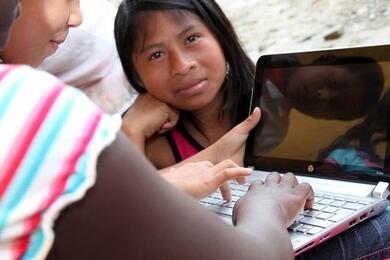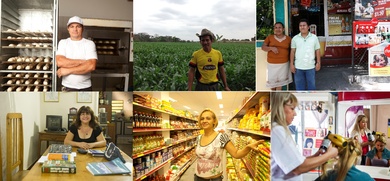
Energy Efficiency: A game changer for business & the environment
Energy efficiency is a simple concept. Do more with less. Channeled through a wide array of industries and organizational departments in Latin America and the Caribbean and elsewhere, a serious approach to energy efficiency has many winners - consumers, private firms and governments.

Technology to access an unexplored market in Peru
Good news for companies and financial institutions interested in tapping into new markets: Peruvians who live at the base of the pyramid (BoP) spent 160 percent more on information and communications technologies (ICT) in 2013 than in 2000 –from US$20 per capita per year to US$52. Currently, four out of ten BoP heads of households use the internet. More than half of them are between 18 and 35 years old. Additionally, 95 percent of the country’s BoP heads of household own a cellphone, and predominantly the younger ones use it to access the internet.

Five reasons FinTech companies are an opportunity for financial institutions and SMEs
By Greg Da Re Access to financing has been and continues to be the main obstacle facing small and medium-sized enterprises (SMEs). According to a recent survey, 90% of all banks surveyed in Latin America and the Caribbean consider SMEs strategically important for their business, yet 44% acknowledge that their portfolio lacks suitable financial products for such enterprises.

10 things a company needs to know about the market at the base of the pyramid
Seventy percent of the population in Latin America and the Caribbean – more than 400 million people – live on less than $10 a day. Even though their income is low, this segment of the population still demands goods and services, and represents a market of $760 billion per year. Hundreds of pioneering companies see opportunities in this market to do profitable business while improving the quality of life of low-income people. But where should they start?

The business case for buying less, but good stuff
I dare you: Can you buy nothing for a whole day? I know it sounds tough, but this was the idea behind the first day of No Impact Week at the IDB – No Consumption Day.

Bring your own WHAT to class???
Seguir a @BIDSecPriv BYOD, not to be confused with BYOB, stands for Bring Your Own Device and is an emerging trend in education. With the penetration rate of mobile and other devices skyrocketing both globally and in Latin America and the Caribbean (LAC), many youngsters are simply inseparable from their devices. The number of mobile subscriptions was estimated to reach the seven billion mark in 2013, higher than the human population (Faille & Morrison, 2013).